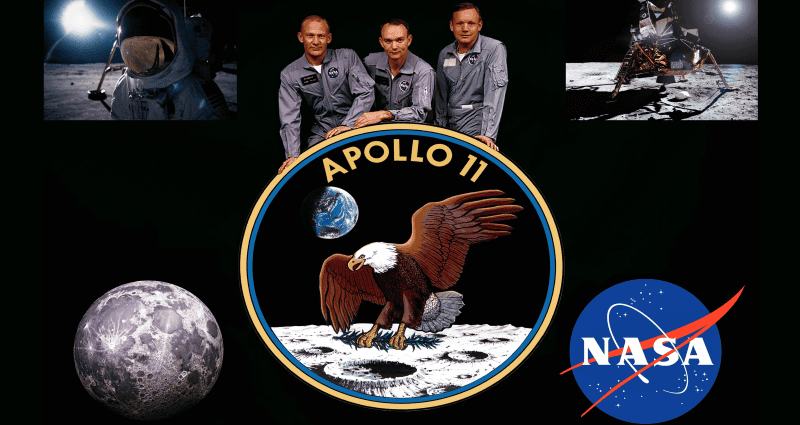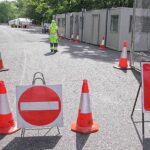You’ll know what this is about! Its fifty years since humans first set foot on the moon. But first we start with a totally different perspective upon the matter – and this is the alleged fakery surrounding the moon landings!
And so it begins…. on the 20th July 1969 fifty years to this day, in some dark studio the cameras were set up and then this pair of legs appeared out of the gloom and cautiously descended to great jubilation around the world and even more cheers went up when the owner of those legs said, ‘that’s one small step for man, one giant leap for mankind.’
Everyone in the studio cheered and clapped their hands and hugged each other and said, we’ve pulled it off! The world fell for the biggest hoax humanity has ever known. And it transpired that one day people would be able to pull off tricks like this in broad daylight! Photoshopping people’s lives in fact… Then someone within the studio butted in and said ‘Ey up where’s that script someone has got, you know, that one for a guy named Truman Burbank?’
Truman Burbank? Hey wait! You mean Jim Carrey in that film where he eventually found his life was one big fake, one big studio in fact. Sail across the faked ocean, hit a wall painted to look like clouds, find a flight of steps up this and at the top of it a door to reality… Ha ha! That didn’t come for another thirty years – by which time many were indeed strongly convinced the moon landings had been faked. No matter what, some would be destined to regard the moon landings just as fake as some would too regard the Earth as flat (and that we are somehow descended from spiders…)
Some people just can’t be convinced of the truth can they?
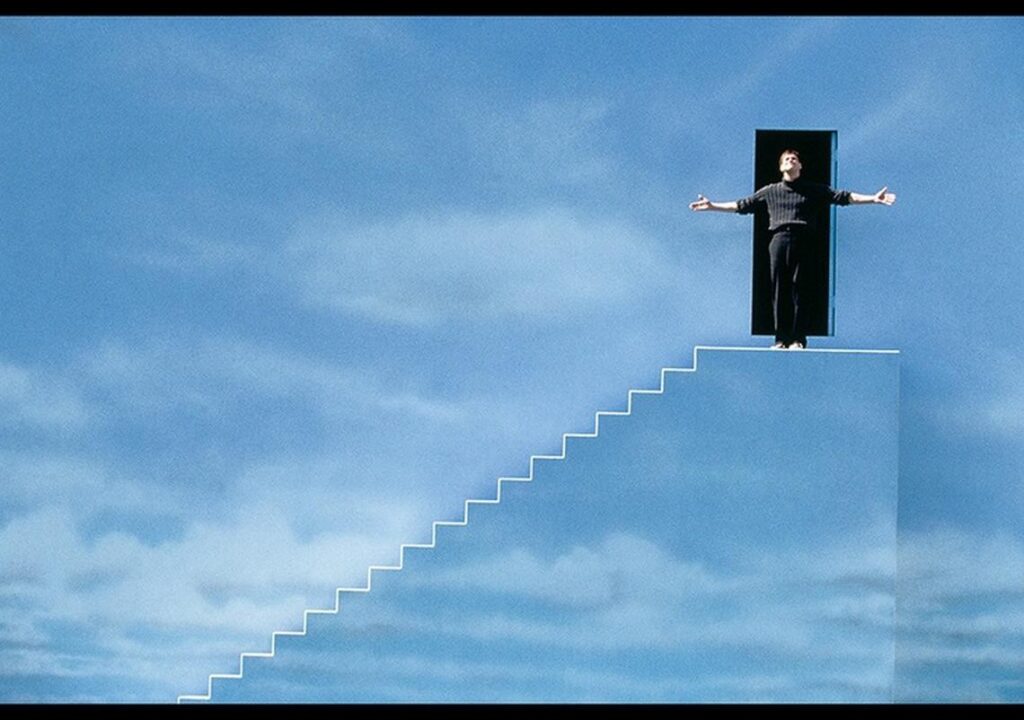
Sod your fake world Christof! I’ve found the door to a real one! Truman Show. Source: Oxonian Review
As for the reality of the moon landings, the truth is maybe we didn’t go back to the moon because the real experience was just too humbling? As it stands space travel isn’t some luxury where a Starfleet commander has a huge bridge of staff and engineers and everyone is able to walk about freely, enjoy life, games and fun.
Its actually boring being cooped up in a spaceship no bigger than a car and then landing on another planet which didn’t really offer a lot if one was truly realistic about it. But the desire to get there was one that counted. There was a space race and this being the time of the Cold War, it was either the Russians or the US.
Everyone knew the moon wasn’t going to be any biggie. It’s just a barren, dusty surface where nothing happens, there’s no television for a start, gravity isnt normal and it was only a few moon rocks that made themselves for transportation back to Earth as proof of the landings themselves.
There was time enough for a pose by the American flag, which wasn’t a flag by the way because it didn’t fly like all flags should. A few hours for conducting some experiments, time enough to eat and sleep and take surveys of the immediate surroundings at the Sea of Tranquillity, and then go back home. The total amount of time spent on the moon was just 21 and half hours.
As everyone will no doubt agree, one of the biggest defining moments, even for the astronauts themselves, was seeing Earth from the moon and how beautiful it looked. That home, that blue planet which rose so gloriously above the astronauts as they spent those few short hours on the moon. This blue planet was their real home – where all the excitement happens and everybody else lives, their friends, families, loved ones and the rest of it.
Home, sweet home! The Earth rising over the moon as seen from Apollo 11.
So what’s this desire about wanting to explore space? Merely even going to the moon? That desire to be a Star Trek commander and issuing the order, ‘engage, warp factor five.’ Well to be honest it all began in a studio somewhere! Even Space 1999 or Gerry Anderson’s UFO. Those fake moon bases! Yes really the FAKED moon cities! The faked on any other planet landing even. Altair Four for example. Think about it before anyone actually ever set foot on the Moon, all the moon landings to that date had been faked.
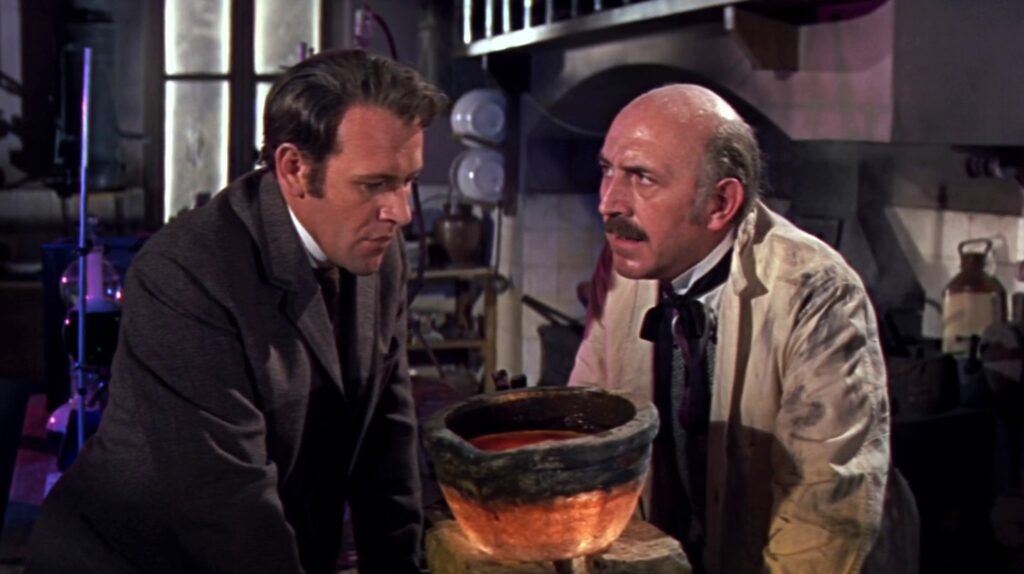
This, my dear Bedford, is the stuff that’s going to get us to the moon! Its Cavorite! Source: IMDb
There’s a huge number of films made before 1969 (and even quite a few made after) that pretend to show the moon, colonies on the moon, monsters on the moon (those Selenites for example), and some oddball Victorians who discover Cavorite and end up being the First Men in the Moon. Even the Grand Duchy of Fenwick got in on the act by building their own rocket to the Moon, propelled by wine of course, as a sort of two fingers at the giant US of A who had thought no-one could beat them! Let’s not forget the leading science fiction writers such as Jules Verne and H. G Wells who too did so much to inspire the human consciousness when it came to landing on the moon.
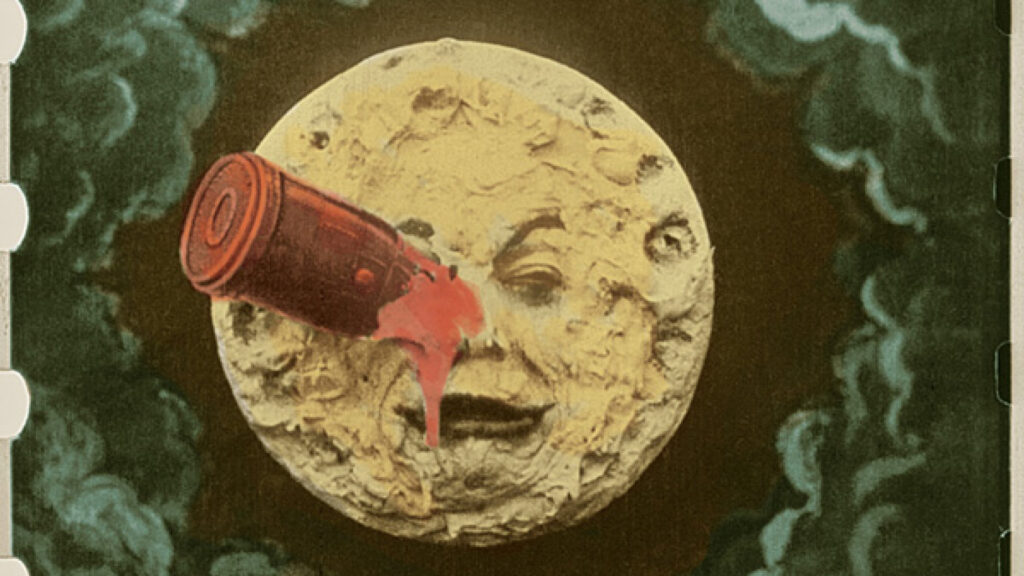
Splat! We gotcha right in the eye! The historic film Le Voyage dans la Lune (1902.) Source: Film at Lincoln Center
You see, fake or not, the moon has always been in the human consciousness. That’s why so many films have been made. Humans have wanted to know what it really is like out there and so far the only way had been to do it in a studio. Yet the moon continued to rise and shine, looking down on us, its tides clearly influencing life on Earth, and its face looking at us smugly and saying ‘you suckers on Earth ain’t seen nothing!’
And us replying back ‘Oi! You calling us suckers? Right, one day we’re going to show you who the real sucker is!’
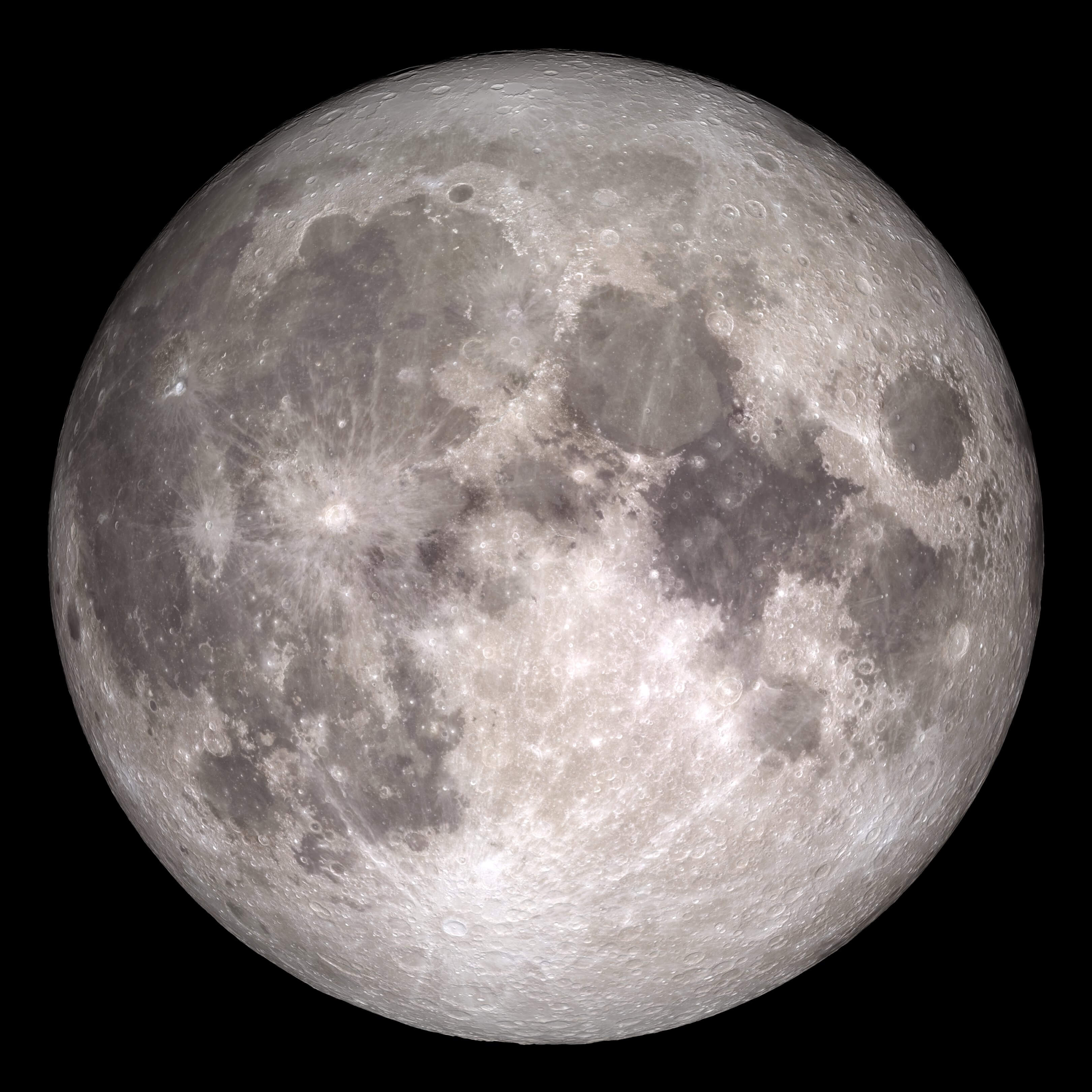
Oi! Who’s that down there calling me a sucker says the moon! Source: NASA
Anyone thinking of sending people to the moon was in fact no sucker of any sort, but a realist. Someone with a dream, a real idea that only happened at that stage to be a dream, but with every hope that this dream would become real.
And this one was for real. The guy who originated the whole notion was a realist. Without him there would have been no Apollo Project. It all began with a speech by President Kennedy making a promise to Congress on 25th May 1961 that the US would have man on the moon before the decade was out. And he was right. They put, not one man on the moon, but in the event a total of twelve went up there! (not forgetting the other six who acted as overseers by encircling the moon in their Apollo spacecraft.)
The scary thing is some thought this great American leader too big for his boots – and so a conspiracy was evolved, the eventual result being a bullet through the President’s brain as he rode a motorcade in Dallas. But Kennedy’s promise lived on. They had got rid of him but they couldn’t get rid of the dream. Just as the shooting of MLK in 1968 too shows, getting rid of important leaders and inspirational shining lights in people’s lives simply doesn’t get rid of a dream.
Thus it follows that getting rid of US presidents didn’t end the idea the moon could realistically be reached in the short space of just a few years… In fact the assassination propelled the Apollo programme forward with an even greater urgency. Not only that, the spaceport where the Apollo craft would take off was renamed Cape Kennedy in the former president’s honour.
Soon NASA was pulling out all the stops. In fact it wasn’t just the Americans. Yes they pulled it off. But they needed the help of so many others too. It was in fact a multi-nation project and the help of many other countries’ was enlisted to make the project a reality.
There are many thousands names whose recognition will never be fully acknowledged, who made the Apollo project possible, people who actually existed, with hearts and minds fully committed to this enormous project. These people lived, not in America, but in other countries and even in places such as Accrington, Chelmsford, Cambridge, Farnborough, Dundee and other UK towns and cities.
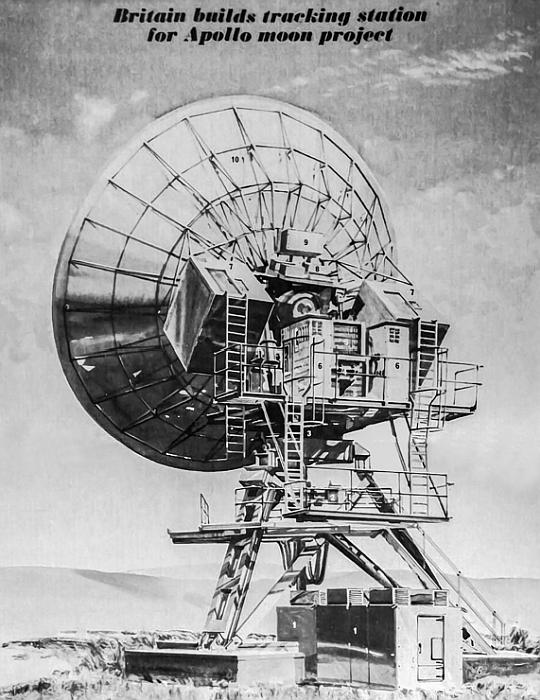
The Marconi tracking station for the Apollo programme, 1966.
One of the big projects delivered by Britain for the Apollo project was Marconi’s tracking station. This was built in 1966 and taken to Ascension Island to form part of a network of dishes helping to track the Apollo spacecraft. The parabolic dish was built by English Electric in Accrington, with the other parts being built by Marconi at its main Chelmsford factory. Final assembly and testing took place at the company’s other factory in Great Baddow.
Britain did many other things to help the project become reality. Jodrell Bank in Cheshire and Goonhilly Downs in Cornwall were in on the project and many British scientists and engineers had a role. Even the Welsh helped. Their Tecwyn Roberts was the one responsible for this series of tracking stations (as the above illustration shows) around the world that would be able to keep a constant eye on the astronaut’s progress.
Other British contributions include: Pratt & Witney in Cambridgeshire for the fuel cells that would power the Apollo craft and the Lunar Modules. Parts of the spacesuits were designed by the Royal Aircraft Establishment in Farnborough. Goonhilly Downs was responsible for transmitting the live broadcasts throughout Europe.
Scotland too was in on the project. A factory in Dundee manufactured the specialist flat ribbon cables that would be needed on the moon itself. The company was Gore, famous for its Goretex. Its ribbon cables are excellent and able to stand the extreme environments in space.
How many around the world actually worked on the Apollo Project? NASA says around 400,000 people technicians, engineers, scientists. This is a huge number for any single project! I would think the number is infinitely greater because companies, factories, manufacturers were involved too. The employees, the admin staff, those undertaking the R&D for the engineers and so on. A number whose true significance shall never be known.
One of the first real big tests of the entire project ended in disaster. This was Apollo 204 in January 1967. Even though R&D did continue the fall out from that fire was huge, ensuring the suspension of the manned part of the entire space project for months. Many aspect of the spacecraft were examined in detail and countless improvements and safety measures were made.

The remains of Apollo 204’s deck. In memory of the three who lost their lives it was renamed Apollo 1. Source: Wikipedia
Because of the disaster it did somehow look as if there would not be anyone on the moon before the sixties were out as Kennedy himself had promised. NASA persevered despite a lot of criticism and reports basically finding it at fault for the said disaster, that ‘potential oxygen incendiary bomb’ in which the innards of the Apollo command module exploded into a fireball.
By the end of 1968 the moon programme was at least on the move once again.
A strong sense of reality ensued. To put humans on the moon there had to be a high degree of effort and expectation, enormous accuracy and above all confidence, as well as a huge amount of imagination, inspiration and creativity. Money too had to be almost practically no object, and that in many ways is too how it all ended after just six manned Apollo missions. It was just far too expensive – and money doesn’t grow on the moon either!
Nevertheless in those heady days of late 1968 and most of 1969, things really got moving. The newly improved and safer combination of Saturn Five rocket and Apollo spacecraft made great strides as they went through the various stages. These progressed from take offs to full circuits of Earth, manoeuvring the Apollo and its Lunar Module in Earth orbit, then the first ever tentative step into the unknown, the first manned trip to the moon with Apollo eight.
Of course it was all practice for the big one. They couldn’t just build a rocket and say ‘right off you go boys, we’ll see you when you get back.’ They had to know that each stage of the journey would work as planned. There were computers in use for these early space projects yet these were very basic and only held at the most a mere few kilobytes of memory. What’s worse is everyone at Mission Control in Houston, in fact the whole world, was biting their nails – this was the great unknown – and everyone was worried whether it would all work.
Besides the disasters that befell the early stages of the work the actual Apollo missions also met with extremely unforeseen problems. Apollo 12 and Apollo 13 are the better known examples of things that went wrong. Apollo 13 is perhaps the most famous however because the mission entailed piloting a stricken command and Lunar Module to the moon and then back to Earth as the one and only means of rescuing its astronauts. Apollo 12 was struck by lightning twice as its launch was underway and this substantially disabled the rocket’s electronics thus potentially sending its astronauts to an unknown fate. The rocket itself few normally because its guidance systems were unaffected. The sheer ingenuity of one of the technicians on the ground at Houston saved the day however and despite some misgivings, the mission went to the moon as planned.
The feature (header image) was specially created for the 50th Anniversary moon landing posts by the author.
